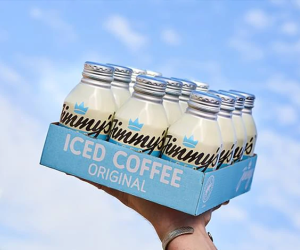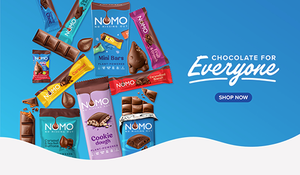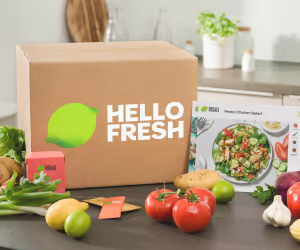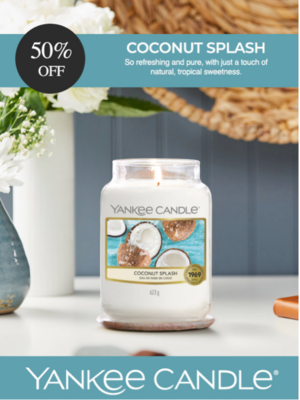Keep homemade ice cream from melting too fast with our expert tips! Discover ingredients, natural stabilisers, and packing tricks for longer-lasting scoops.
There’s nothing more disappointing than watching your perfectly churned homemade ice cream turn into a puddle before you’ve even had a chance to enjoy it — especially during the warmer months.
Trust me, I’ve been there! I’ve had my fair share of fails in the melted ice cream department and know that sinking feeling when all your hard work literally melts away.
 But honestly? It’s all part of the learning process — figuring out what works, what doesn’t, and adjusting your method until you nail that perfect, long-lasting scoop.
But honestly? It’s all part of the learning process — figuring out what works, what doesn’t, and adjusting your method until you nail that perfect, long-lasting scoop.
With a few smart techniques and ingredient tweaks, you can make your homemade ice cream hold up better in the heat, so it stays firm, creamy, and delicious for longer.
👉🏽 Want to master the texture too? Don’t miss our article – How to Make Homemade Ice Cream Soft, Fluffy, and Scoopable.
In This Article:
✅ Why homemade ice cream melts faster than shop-bought varieties
✅ Simple ingredient tweaks to help your ice cream hold up in the heat
✅ Natural stabilisers and how to use them
✅ Best packing and serving tips for picnics, festivals, and parties
✅ Smart sweetener and alcohol hacks for longer-lasting scoops
✅ Additional links for more ice cream know-how
Why Does Homemade Ice Cream Melt Faster Than Shop-Bought?
 Homemade ice cream has so many wonderful benefits — you have full control over the ingredients, can skip unnecessary additives, customise flavours exactly to your taste, and often use fresher, higher-quality components than many store-bought options. There’s something extra satisfying about creating your own frozen treat, knowing it’s free from artificial stabilisers, gums, or preservatives.
Homemade ice cream has so many wonderful benefits — you have full control over the ingredients, can skip unnecessary additives, customise flavours exactly to your taste, and often use fresher, higher-quality components than many store-bought options. There’s something extra satisfying about creating your own frozen treat, knowing it’s free from artificial stabilisers, gums, or preservatives.
However, those very advantages can also bring a few downsides, and one of the most common is that homemade ice cream tends to melt faster than shop-bought varieties. Why?
- Most commercial ice creams include stabilisers (like guar gum or carrageenan) and emulsifiers that help bind water and fat together, prevent large ice crystals from forming, and keep the mixture smooth, creamy, and slower to melt.
- Homemade ice cream, by contrast, often lacks these commercial agents. Without them, water and fat can separate more easily as the ice cream softens, leading to quicker melting once it’s out of the freezer.
- Small-batch freezing at home typically forms larger ice crystals than industrial churning and blast freezing. These larger crystals break down faster, turning to liquid sooner when exposed to warm temperatures.
- Air content (or overrun) is another factor — store-bought ice cream is often whipped with more air, which can help it hold structure a bit longer. Homemade versions generally contain less air, so they lose their shape and melt more quickly.
Of course, knowing these factors means you can also take steps to counteract them — from adjusting your recipe to using techniques that improve texture and melt resistance (which we’ll cover in this guide!).
Top Tips to Stop Homemade Ice Cream Melting Too Fast
1️⃣ Use More Fat or Creamy Ingredients
Ingredients high in fat (like double cream, coconut cream, or nut butters) give your ice cream body and help slow melting.
👉🏽 Try recipes like our – Homemade Low-Fat Date and Banana Vegan Ice Cream – for naturally creamy ideas.
2️⃣ Incorporate Natural Stabilisers
Additions like egg yolks, condensed milk, guar gum, or arrowroot powder help bind water and fat, creating a smoother texture that holds up better.
👉🏽 For more on balancing sweetness and stability, visit Balancing Flavour and Health – Natural Sweeteners and Homemade Ice Cream.
3️⃣ Pre-Chill Everything
Chill your mixing bowl, utensils, and storage tubs before use. Starting cold helps ice cream set faster and form smaller ice crystals.
4️⃣ Pack it Right for Picnics & Parties
✅ Use insulated cool boxes or ice cream sleeves.
✅ Pack ice packs or frozen water bottles around the container.
✅ Store in smaller tubs for faster scooping and resealing.
👉🏽 Planning a festival or outdoor event? Head over to our picnic/festival-friendly ice cream guide!
Disclosure: This post contains affiliate links, which means that we may receive a commission if you make a purchase using these links. As an Amazon Associate, we earn from qualifying purchases.
5️⃣ Serve Smart
🍨 Pre-scoop into bowls or cones and keep chilled/frozen until ready to serve.
🍨 Offer toppings like nuts or fruit that stay firm even if your ice cream softens a little.
Bonus Tip – Alcohol + Sweetener Tweaks
If you’ve ever found your homemade ice cream melting too quickly or freezing too hard, a couple of clever tweaks can make all the difference.
- Add a splash of alcohol — Incorporating 1–2 tablespoons of a neutral spirit like vodka or a subtly flavoured option like rum can lower the freezing point of your ice cream. This helps prevent it from turning into an ice block, keeps the texture smoother, and slows melting when served. The alcohol works without noticeably altering the flavour when used in small amounts — it’s all about function, not booziness! For a deeper dive into how alcohol interacts with frozen desserts, don’t miss our guide 👉🏽 The Art and Science of Blending Alcohol with Ice Cream.
- Combine your sweeteners — Using a blend of sweeteners (such as stevia with erythritol, or monk fruit combined with xylitol) can help balance sweetness while also improving structure. Different sweeteners crystallise and interact with fats in unique ways — blending them can give you a creamier, smoother texture and reduce iciness.
- Bonus link for inspiration — 👉🏽 Check out our Easy Homemade Keto Ice Cream – for examples of sweetener combinations that work beautifully!
📌 Additional Articles for More Ice Cream Know How
✅ Troubleshooting Tips and Tricks for No-Churn Ice Cream
✅ Learn to Make Homemade Ice Cream – A Beginner’s Guide
✅ Ice Cream Storage Solutions
The Final Scoop
Mastering the art of preventing melted, disappointing homemade ice cream is a journey — one filled with experiments, tweaks, and sweet victories. With the right techniques, from choosing the perfect mix of ingredients to getting the freezing process just right, you can enjoy creamy, scoopable ice cream every time. Don’t let a few early melts put you off — it’s all part of learning what works.
👉🏽 If you’ve got your own tried-and-tested tricks for keeping homemade ice cream perfectly scoopable, we’d love to hear! Share in the comments below or tag us on Pinterest or Instagram so we can celebrate your creations.
We hope that you have enjoyed our article – How To Stop Homemade Ice Cream From Melting Too Fast – and that we have given you some ideas and tips to stop your ice cream from melting too fast. If you have any questions, please drop us a comment below, and we will be happy to get back to you.
Stay connected for more homemade ice cream inspiration! Share your homemade ice cream masterpieces with us on social media, and connect with a community of ice cream enthusiasts. Join us for mouthwatering recipes, expert tips, and exclusive updates. Follow us on Pinterest, Instagram, Facebook, and X by clicking on any of the social media icons below.
Disclosure: This post contains affiliate links. If you click on these links and make a purchase, we may earn a small commission at no additional cost to you. This helps support our website and allows us to continue creating content. Thank you for your support!









































This is an interesting topic that I truly didn’t think was much of an issue. But I have heard that some fats, such as skim milk powder can improve the structure of ice cream. Custard base, especially that includes eggs, can be beneficial in decreasing ice cream melting time. As for as a stabilizer, a little corn starch may help in ice cream melting a little slower. Higher sugar content lowers ice cream’s freezing point, making it more likely to melt faster. Very interesting and well-written article!!
Best wishes,
Kent
Hi Kent,
Thank you so much for your thoughtful comment — I’m really glad you enjoyed our article!
You’ve made some excellent points. Skim milk powder is indeed a fantastic way to boost milk solids and improve body and structure, and as you mentioned, custard bases with egg yolks bring both richness and that emulsifying power which helps with stability and slower melt. Corn starch is another great tip — just a small amount can go a long way in helping bind water and improve texture.
And you’re absolutely right about sugar’s role in lowering the freezing point — it’s a balancing act, isn’t it? Too much and it softens the whole batch, too little and you risk iciness.
Our article – How To Make Homemade Ice Cream Soft, Fluffy, And Scoopable! – provides more guidance and tips on how to avoid melting ice cream, too.
Thanks again for stopping by and contributing such a helpful addition to the conversation!
Best wishes,
Cherie